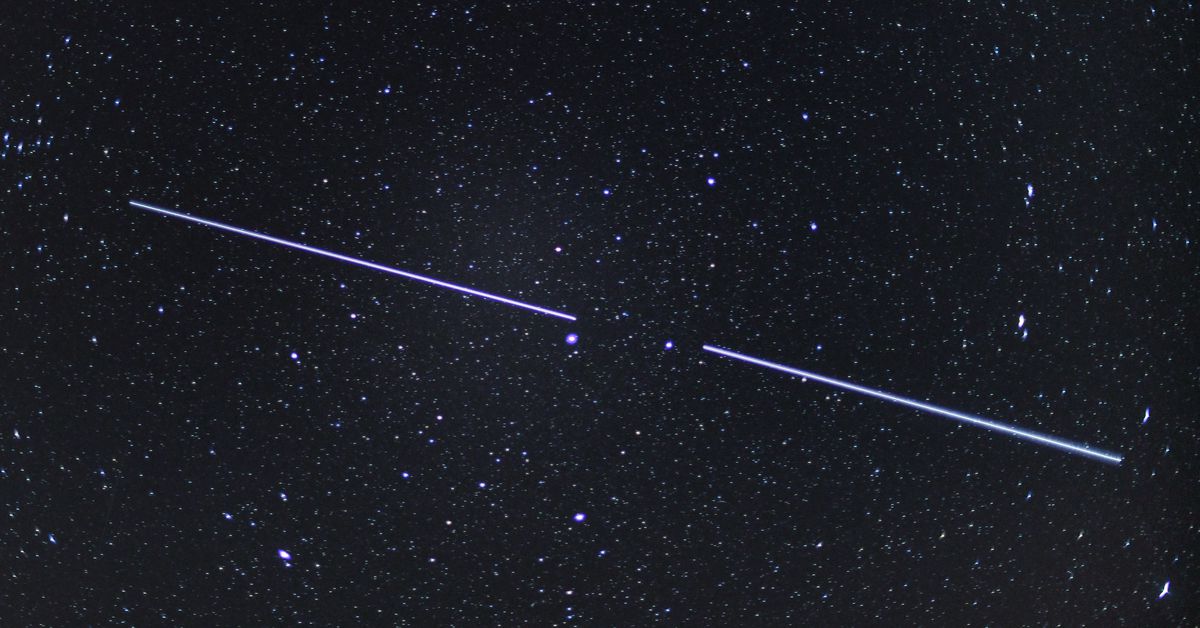OneWeb, SpaceX satellites dodged a potential collision in orbit
Source: The Verge added 09th Apr 2021Two satellites from the fast-growing constellations of OneWeb and SpaceX’s Starlink dodged a dangerously close approach with one another in orbit last weekend, representatives from the US Space Force and OneWeb said. It’s the first known collision avoidance event for the two rival companies as they race to expand their new broadband-beaming networks in space.
On March 30th, five days after OneWeb launched its latest batch of 36 satellites from Russia, the company received several “red alerts” from the US Space Force’s 18th Space Control Squadron warning of a possible collision with a Starlink satellite. Because OneWeb’s constellation operates in higher orbits around Earth, the company’s satellites must pass through SpaceX’s mesh of Starlink satellites, which orbit at an altitude of roughly 550 km.
One Space Force alert indicated a collision probability of 1.3 percent, with the two satellites coming as close as 190 feet — a dangerously close proximity for satellites in orbit. If satellites collide in orbit, it could cause a cascading disaster that could generate hundreds of pieces of debris and send them on crash courses with other satellites nearby.
Currently, there’s no national or global authority that would force satellite operators to take action on predicted collisions. Space Force’s urgent alerts sent OneWeb engineers scrambling to email SpaceX’s Starlink team to coordinate maneuvers that would put the two satellites at safer distances from one another.
While coordinating with OneWeb, SpaceX disabled its automated AI-powered collision avoidance system and manually steered its Starlink satellite out of the way, according to OneWeb’s government affairs chief Chris McLaughlin. It was unclear why exactly SpaceX disabled the system. SpaceX, which rarely responds to reporters, did not return multiple requests for comment for this story, nor did David Goldman, the company’s director of satellite policy.
SpaceX’s automated system for avoiding satellite collisions has sparked controversy, raising concerns from other satellite operators who say they have no way of knowing which way the system will move a Starlink satellite in the event of a close approach. “Coordination is the issue,” McLaughlin says. “It is not sufficient to say ‘I’ve got an automated system,’ because the other guy may not have, and won’t understand what yours is trying to do.”
SpaceX has roughly 1,370 Starlink satellites in orbit and is on track to launch thousands more, with ambitions to build a 12,000-satellite network of global broadband coverage. OneWeb has launched 146 satellites so far, of the roughly 650 it plans to send into orbit for a similar global network, operating in higher orbits around Earth. And Jeff Bezos’ Amazon has pledged to join the same race, planning to launch over 3,000 satellites in low-Earth orbit. All companies want to beam broadband internet into Earth’s most rural regions to meet increasing demand from consumers and governments alike.
“This event was a good example of how satellite operators can be responsible given the constraints of global best practices,” says Diana McKissock, the head of the Space Force 18th Space Control Squadron’s data sharing and spaceflight safety wing. “They shared their data with each other, they got in contact with each other, and I think in absence of any global regulation, that’s… the art of the possible.”
Still, the sharp increase of satellites in orbit, mainly driven by SpaceX’s Starlink venture, has moved faster than any authority can regulate the industry for safety. McKissock says SpaceX has made efforts to increase its transparency in orbit; the company currently provides location data of its satellites to other operators. But its automated system for avoiding collisions is a closed book where openness and coordination are needed the most, analysts and operators say.
“What is the point of having it if you have to turn it off when there’s going to be a potential collision?” Victoria Samson of the Secure World Foundation says, adding that the void of any clear international framework for managing active objects in space makes it largely unclear who would be held responsible if a collision actually occurred.
Satellite maneuvers in space are common, but worry in the industry is mounting as OneWeb, SpaceX, Amazon, and other companies race to toss more satellites into space. And this Starlink close call isn’t the first. In 2019, a European Space Agency satellite had to move out of the way of a Starlink satellite to avoid a potential collision. SpaceX didn’t move its satellite because of a computer bug that prevented proper communication with ESA, it said at the time.
With more OneWeb satellite launches planned on a monthly basis, and with planned constellations from Amazon and Telesat in higher orbits than Starlink, the need to establish clear rules of the road in orbit is becoming more urgent than ever. SpaceX looms especially large, not just because of the size of its constellation but because of where it’s sending them. “OneWeb and others will have to transit through Starlink to reach their destinations, so SpaceX needs to ensure now that other satellite operators can do that safely,” says Caleb Henry, a satellite industry analyst at Quilty Analytics.
McKissock says the 18th Space Control Squadron is fully aware of the industry concerns with SpaceX’s autonomous avoidance approach. “So it’s been interesting,” she says. “But like I said, I’m glad they talked to each other. The scary situation is when one of the operators is not communicative, and then it’s just crossing your fingers.”
brands: ACTION Amazon Art Best Chief Especially First It New One Orbit other Samson Sharp Space Team WAS Yours media: 'The Verge' keywords: Amazon ESA Internet SpaceX
Related posts
Notice: Undefined variable: all_related in /var/www/vhosts/rondea.com/httpdocs/wp-content/themes/rondea-2-0/single-article.php on line 88
Notice: Undefined variable: all_related in /var/www/vhosts/rondea.com/httpdocs/wp-content/themes/rondea-2-0/single-article.php on line 88
Related Products
Notice: Undefined variable: all_related in /var/www/vhosts/rondea.com/httpdocs/wp-content/themes/rondea-2-0/single-article.php on line 91
Warning: Invalid argument supplied for foreach() in /var/www/vhosts/rondea.com/httpdocs/wp-content/themes/rondea-2-0/single-article.php on line 91
